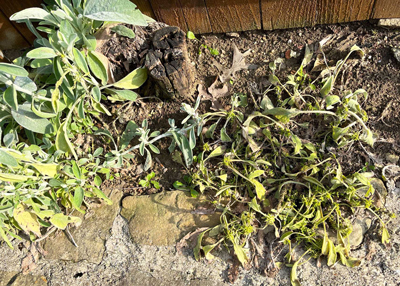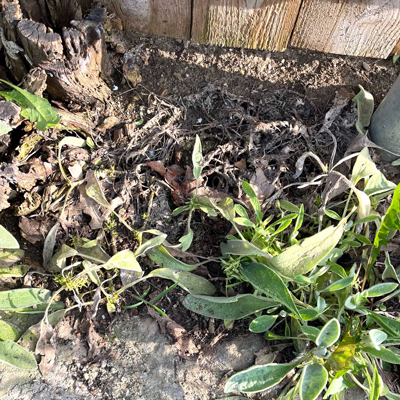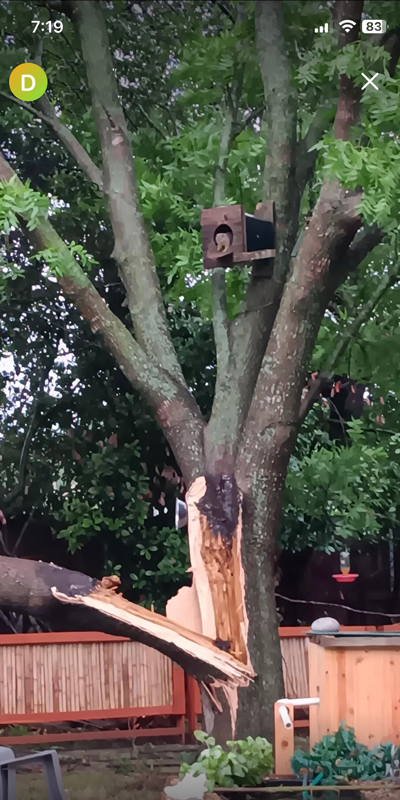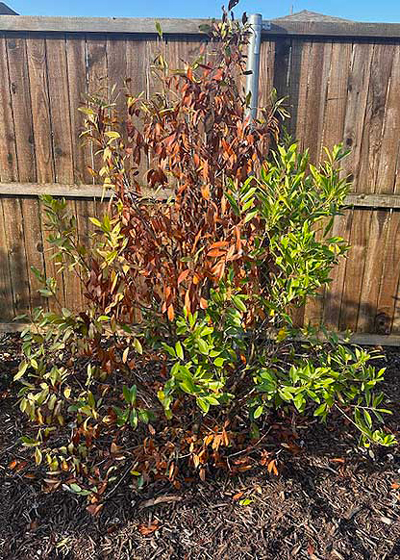Q&A – Ask Neil: June 6, 2024
(Please read these instructions carefully.)
Before you post your question, please look at recent issues to see if someone else has already asked it. You might find your answer there.
How to submit your question…
(Note: You may need to allow a pop-up window to come up in order to get the link for sending your photo(s). If you have already submitted your question and didn’t see the pop-up window, please click here.)
• Click the link provided below to post your question. After you submit your question, a new window will pop up giving you the address to which you can e-mail a SHARP, HIGH-RESOLUTION PHOTO to accompany your question. Please DO NOT SEND THUMBNAIL PHOTOS in case I need to zoom in to see things.
• Click here to post your question.
• Please ONLY POST YOUR QUESTION ONE TIME. We can only accept a set number of questions each week, and when we get duplicates it costs other people their chances.
• One question per reader, please.
• Please use this only for posting questions – not for standard emails.
• Watch for your answer in the following week’s e-gardens.
• I choose those of greatest general interest. For example, plant IDs seldom make the cut.
• I must have your first name or initials.
• I must have your city or county. (Texas is a very large state.)
QUESTION 1
WHY ARE GRASSBURS ALREADY GROWING?
Question: I applied pre-emergent granules in March to prevent stickerburs and it worked. Until last week. Now I see several dozen growing. I had planned to make my second application but I’m now wondering if I’m too late. Why are they already there? Dustin I., Fort Worth.
Answer: I can think of a couple of possible reasons. With all the rain that your area has seen, the active ingredient in your pre-emergent herbicide may have been washed into the soil a few weeks earlier than normally would be expected. Or, if the plants you’re seeing are all in one or two spaces, it’s possible that you missed an area or two when you were making the March treatment. I would definitely go ahead with your plans on the second application. I would make it as soon as possible. You’ll still control a big percentage of the remaining seeds that might germinate.
QUESTION 2
WHAT IS HAPPENING TO MY LAMB’S EAR?
Question: What is happening to my lamb’s ear plants? They seem to be dying. Some of the plants seem to have small green growths at their bases that look like some kind of moss. David D., Mansfield.


Answer: Waterlogged soils will do that to lamb’s ear, as will allowing flower stalks to form without pinching them out. This is one plant you do not want to flower. I don’t know if either of those applies to your plants, but those would be my best guesses.
Having now cropped your photos to size, the plants really look like they may have been hurt by waterlogged soils.
Relative to the moss: I see small plants coming up from the stalks of the mother plants. If those are what remind you of moss, they’re normal for plants under stress. I fear that you’re going to need to start over. You’ll either need to raise the planting bed or switch to another type of plant that can handle waterlogged soils periodically without suffering this kind of damage. Powis Castle artemisia might be better.
QUESTION 3
WHY WOULD SECOND APPLICATION OF PRE-EMERGENT BE USELESS IF YOU DID NOT MAKE THE FIRST ONE IN MARCH?
Question: You stated, “If you did not make the first application of pre-emergent to prevent crabgrass in March, making the “second” one now would be useless.” I don’t understand why that would be the case. Mike N., Collin County.
Answer: The major onslaught of crabgrass germinates in April as the soils warm. However, there are many seeds that do not sprout at that time. They hang around and will germinate sporadically later in the spring and on into the summer.
Put yourself in my shoes. If I were to recommend putting pre-emergent granules out when a lawn was already filled with crabgrass, can you imagine the outcries I’d get that I had wasted people’s money! Sure, you’ll get some limited positive impact by making an application now, but I seriously doubt that you’ll be able to tell it. Most of the crabgrass is ankle-deep already.
QUESTION 4
HOW CAN I ELIMINATE CAROLINA SNAILSEED VINE?
Question: How can I get rid of Carolina snailseed vine? It’s competing with other vines in what was once a wooded shaded area. Cindy G., Grapevine.

Answer: Carolina snailseed vine is an apparently attractive vine that’s made even more so when it bears its red berries in fall. But they are quickly eaten by birds and carried elsewhere in the landscape, and it continues its quest to crowd out everything around it.
I have found that my easiest way is to cut the vine to the ground, then pull out a roll-type weed-blocking landscape fabric across the entire bed where the weed vine is growing. I overlap any seams by 3 to 4 inches, and I cover all the roll fabric with compost or bark mulch to make it more attractive. I leave it in place for a couple of years and the snailseed vines are gone. Herbicides have never worked for me because the roots are tenacious and there isn’t enough leaf area to absorb any weedkiller spray.
Note in conclusion: If all your snailseed vine is out in the open as shown in your photo you should be able to dig and remove it with a sharpshooter spade. You would have total access to its roots.
QUESTION 5
IS ‘BUSY BEE’ VITEX A GOOD VARIETY?
Question: I’ve seen you write about vitex, but not about the variety called ‘Busy Bee.’ Is it good here? Elaine C., Bryan.
Answer: There are several dozen varieties of vitex in the market today, and all should do well in Brazos County and, for that part, all of the southern 80 percent of Texas. The shorter types like ‘Busy Bee’ and ‘Blue Diddley’ offer the great looks in more compact plants.
QUESTION 6
CAN THIS TREE BE SAVED?
Question: After the storms this week I’ve seen a lot of tree damage. This one in particular made me sad. Can it be saved with this scale of damage? Olga G-O, Dallas in Collin County.

Answer: That photo looks very strange (low resolution and pixelated). Was it a screen capture off Facebook? It appears that there is very dark wood around the spot where the limb broke loose. If so, that would be a sign of decay, but I can’t tell how far into the trunk that decay may extend. It may well be that the tree has “pinched off” that central trunk and not allowed it to form a sound union with the outer two trunks. That’s what happens to ornamental pears, for example. A certified arborist would need to examine it to be sure it’s safe. It’s big enough that it could really hurt someone if it were to break again. It definitely needs attention.
QUESTION 7
HAS EXCESS RAIN KILLED MY NEW PLANTS? (SEVERAL QUESTIONS)
Question: Last fall we added 6,000 sq. ft. of new bed space where we had had bermudagrass turf before. We amended the soil with compost and expanded shale and built raised beds.
Most of the plants are doing well except for a compact cherry laurel (planted in December) and a Felix magnolia (planted in February).
The cherry laurel leaves began turning yellow and dropping about two weeks ago. The cherry laurel beside it looks fine.
The Felix magnolia’s leaves are dying on the top two-thirds of the tree. They are turning yellow, then dropping. There appears to be a fungus on their backsides.
I have not added any supplemental water to these plants because of the rains. We did have a drainage issue which was corrected by a French drain.
If these plants are not likely to recover, what would you suggest that would do better? Jan H., no city given.


Answer: Just as a comment, “yellow” is not a really useful symptom because it just tells us that a plant isn’t prospering. Many things can cause leaves to turn yellow. Poor drainage certainly can, but generally it’s accompanied by soggy soil and wilted foliage (due to lack of oxygen in the soil, therefore dying roots). I actually think there is a chance of the exact opposite: that the cherry laurel and perhaps also the magnolia got too dry at some point 4 to 8 weeks ago. We have had a couple of dry spells in many parts of Texas. They didn’t last long, but it also doesn’t take long for new plants that filled their nursery soil balls with roots to dry out. I do not see any evidence of disease on either plant.
I so wish I had some clue of where you live. That impacts my plant recommendations completely. You could imagine they would be different for Texarkana or San Antonio, Lubbock or Houston.
If you end up replacing the magnolia (which needs shade from mid-morning on – you might consider moving it next winter), I’d suggest a crape myrtle like Catawba (beautiful medium purple color on a 15-foot plant). There are many other handsome types. Nurseries have good selections right now.
You could also use a tree-form, multi-trunk Nellie R. Stevens holly, yaupon holly, weeping yaupon holly, or ‘Warren’s Red’s Red possumhaw holly.
To replace the compact cherry laurel, Willowleaf holly, dwarf Burford holly, or one of the “Red” hollies could work.
All the plants I mentioned can take sun or shade in almost any part of Texas. I could have listed more suggestions if I’d known where you are.
Note as I finish choosing from your 13 photos and editing to size: I think I’m seeing a drip irrigation line running back to the cherry laurel. I really want to warn you that that will be a very risky way to water any new plant in your landscape. All of any plant’s roots will be in the original soil ball from the nursery, and we rarely leave drippers running long enough to get to the bottoms of those soil balls. It’s far safer to water by hand using a water wand and water breaker or bubbler. I suggest applying the same amount of water as the pot from which each plant was planted and that it be applied every other day during the heat of the summer. In other words, if it came out of a 20-gallon pot, the plant gets 20 gallons of water every two days. That will take one minute with a hose and breaker. It would take many hours with a dripper.
